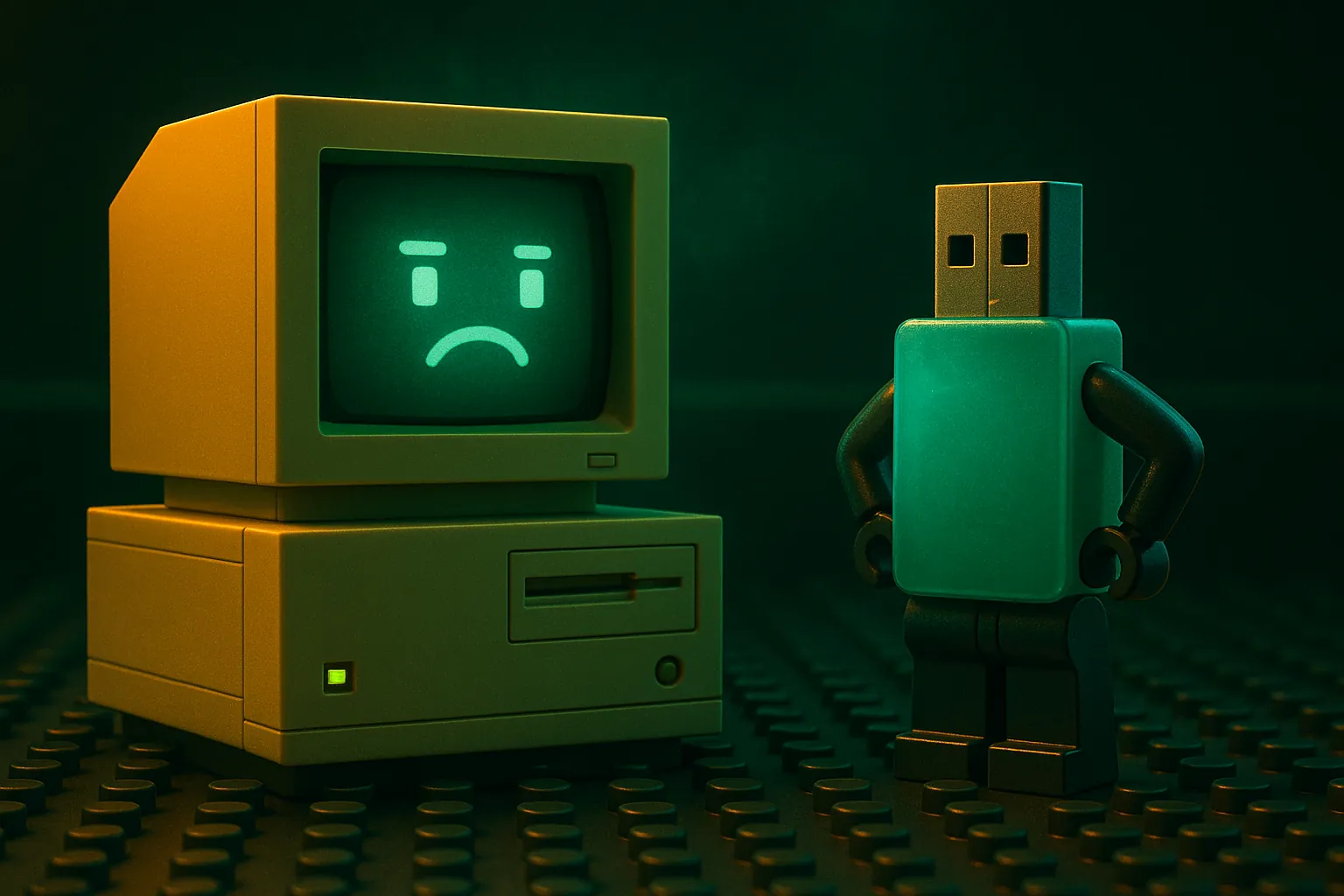Why won’t my computer recognize my USB drive?

Table of Contents
Likely causes:
- Port power issues; try a rear I/O port or a powered hub.
- Drive letter collision; assign a new letter in Disk Management.
- File system corruption; check with “chkdsk” or test on another PC.
- Missing chipset/USB drivers after a reinstall.
- ExFAT/NTFS compatibility issues on older systems.
Need help? Check here: /services/computer-maintenance/
What it might be (likely causes)#
Power and port quirks
Front‑panel ports and unpowered hubs can brown‑out larger flash drives and portable HDDs. Rear motherboard ports usually deliver steadier power. For backup safety before experimenting: /posts/simple-data-backups-without-cloud/Drive letter collision / offline volume (Windows)
Windows can mount a drive but hide it if the assigned letter is already taken or the volume is set Offline. Fix in Disk Management.File system trouble
A dirty bit or minor corruption can prevent mounting.chkdskoften repairs this. Background: CHKDSKMissing/old USB or chipset drivers
After a fresh OS install, USB controllers may use generic drivers that don’t fully enumerate devices. Vendor chipset/USB drivers usually restore stability.Format compatibility
Older OS builds may lack exFAT support or have limited NTFS write support (on some non‑Windows systems). Primer: exFAT, USB mass storagePhysical device failure
Worn flash memory or a bent connector can make a drive intermittent or invisible. If the drive feels hot or disconnects when touched, suspect hardware.
Things to check (quick, safe wins)#
Try a known‑good port and cable
Plug into a rear I/O USB port (desktop) or a different port (laptop). Avoid unpowered hubs for testing. If it’s a 2.5" USB HDD, use a Y‑cable or powered hub.See if the OS detects anything
- Windows:
Win + X→ Disk Management. Do you see the disk or an Unknown/Unallocated entry? - Linux:
lsusbanddmesg -wwhile you plug it in—look for enumeration messages.
- Windows:
Assign a drive letter (Windows)
In Disk Management, right‑click the volume → Change Drive Letter and Paths… → Add or Change → pick a letter far down the alphabet.Run a non‑destructive file system check (Windows)
Open PowerShell (Admin) and run:chkdsk E: /scanReplace
E:with the correct letter. If it reports errors, run:chkdsk E: /fMicrosoft reference: CHKDSK command
Check Device Manager for controller issues
Win + X→ Device Manager → Universal Serial Bus controllers. If devices show warnings, right‑click → Uninstall device, then Scan for hardware changes. Install vendor chipset/USB drivers afterward.Test on another computer
If it works elsewhere, copy critical data immediately. If it fails everywhere, it’s likely the drive itself. Prep for intake: /posts/prepare-for-computer-repair/As a last resort: recover files before reformatting
If the partition table is damaged, consider imaging the device first. When you’re ready to reformat for widest compatibility, use exFAT for cross‑platform, NTFS for Windows‑centric, ext4 for Linux.
Patterns that point to the cause#
- Shows in Device Manager but no drive letter → assign a letter or bring the disk Online in Disk Management.
- Visible as “Unknown/Not Initialized” → partition table damage; recover data first.
- Works on one machine but not another → driver/port issue on the failing PC.
- Disconnects when touched → loose connector or failing drive.
If your end goal is a bootable USB (installers, rescue media), use this guide after the drive is healthy: /posts/boot-from-usb-every-major-system/
When to pause and get help#
- The drive makes clicking sounds or overheats.
chkdskreports bad sectors repeatedly.- Disk Management asks to Initialize a drive that contains important files.
A quick bench test, imaging, and safe recovery workflow can save your data before anything destructive happens.
Insight#
USB storage is a three‑part handshake: power, enumeration, and filesystem. If power is marginal, enumeration fails; if enumeration works but the filesystem is dirty, the OS hides it. Triage in that order—stable power, confirmed detection, then careful repair—and you’ll solve most cases with minimal risk to your data.
Need dependable help in Kirksville—data rescue, USB port repair, or clean formatting?
See /services/computer-maintenance/.